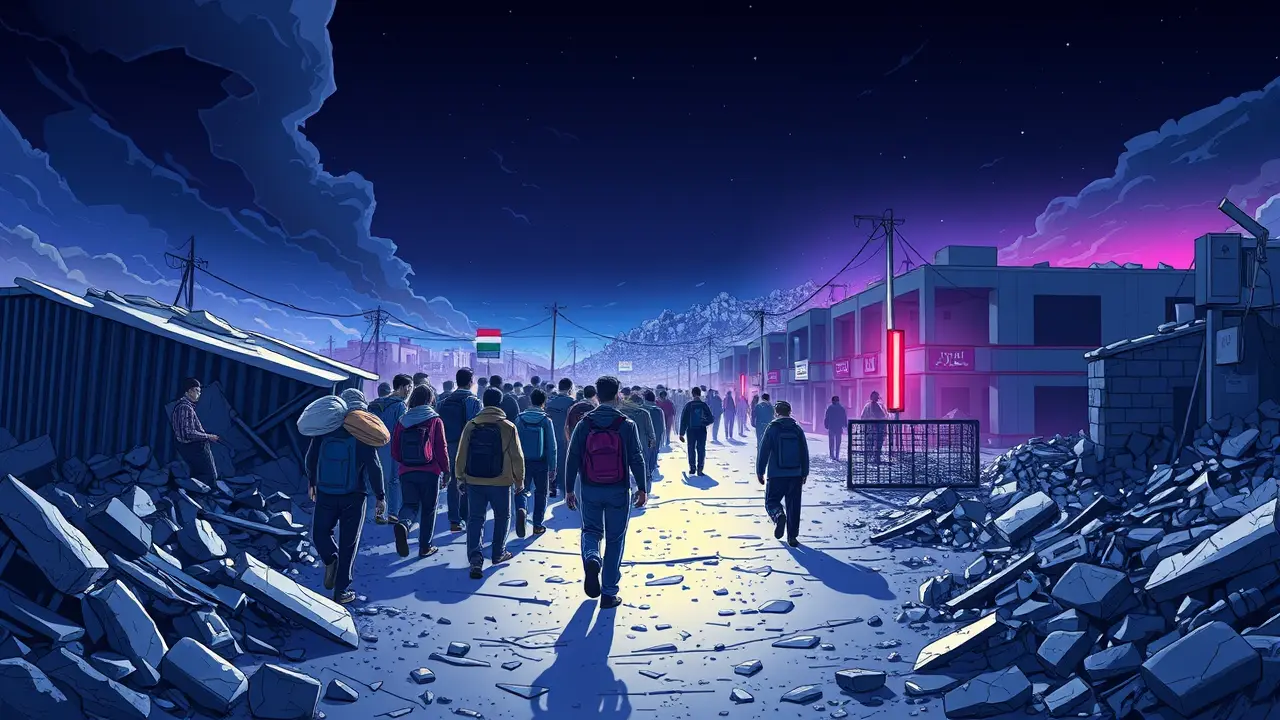Palestinians return to destroyed Gaza as truce begins.
A palpable, desperate energy crackled through the Gaza border crossings on Friday as tens of thousands of Palestinians, carrying the few possessions they could salvage, began a grim pilgrimage back to the heavily destroyed north. The fragile, US-brokered ceasefire had taken hold, a temporary silence replacing the thunder of airstrikes and offering the first, tentative hope for an end to the brutal Israel-Hamas war that has ravaged the enclave.The deal, a complex web of diplomacy and desperation, promised the release of all remaining hostages within days, a prospect that brought tears of relief to families in Israel but was met with a more somber, weary reception here, where the scale of the homecoming tragedy was just beginning to unfold. I’ve read the Reuters alerts every morning for years, and this scene, relayed by on-the-ground reporters, carries the heavy weight of so many other global crises—the return is not to safety, but to rubble, to the ghostly skeletons of homes where lives were built and then violently unmade.The images are heart-wrenching: fathers sifting through concrete dust with bare hands, children staring blankly at unrecognizable streets, a landscape so thoroughly altered it defies memory. Yet, beneath this fragile calm, the political fault lines that sparked this conflict remain dangerously unresolved.The most pressing, explosive question hanging over this truce is one of governance: who will rule Gaza once the Israeli troops, currently beginning a gradual pullback, fully withdraw? The ceasefire plan championed by the US administration calls for the disarmament of Hamas, a demand the group has historically rejected as an existential surrender, viewing its military wing as the sole remaining guarantor of its power and Palestinian resistance. Can a movement born from and sustained by armed struggle truly transform into a purely political entity? History offers little comfort here.Meanwhile, Israeli Prime Minister Benjamin Netanyahu, who unilaterally ended the intense phase of operations, faces a firestorm of his own from a hard-right coalition that views any concession as a victory for terrorism. His political survival is now intrinsically linked to a outcome that satisfies both an international community demanding a lasting peace and a domestic base demanding absolute security—two goals that have proven tragically mutually exclusive for decades.The scenes of return are not a victory parade; they are the first act in a monumental humanitarian catastrophe. The north of Gaza is, by all accounts, uninhabitable.Critical infrastructure—water lines, sewage systems, the electrical grid—lies in utter ruin. The UN and other aid agencies are scrambling, but the logistical challenge of providing shelter, food, and medical care to a population returning to a wasteland is almost insurmountable.The ceasefire may have stopped the bombs, but it has unleashed a slow-moving disaster of disease and deprivation. This is the cruel paradox of this moment: the desperate desire to go home is leading people back into a environment more immediately lethal than the one they fled.The international community watches, but as so often in this conflict, watches with a divided and impotent gaze. The US, having brokered the deal, now owns its consequences, but possesses limited leverage to enforce its most contentious clauses.Regional powers like Egypt and Qatar play crucial mediating roles, yet their influence over the entrenched ideologies on both sides is questionable. And so, the people of Gaza walk home, their footsteps a quiet, defiant testament to resilience, even as the political architects of their plight remain locked in a stalemate that threatens to shatter this tenuous peace at any moment. The road from rubble to reconstruction, from ceasefire to a just and lasting political solution, is a longer and more arduous journey than any of them have yet undertaken.
It’s quiet here...Start the conversation by leaving the first comment.
© 2025 Outpoll Service LTD. All rights reserved.
